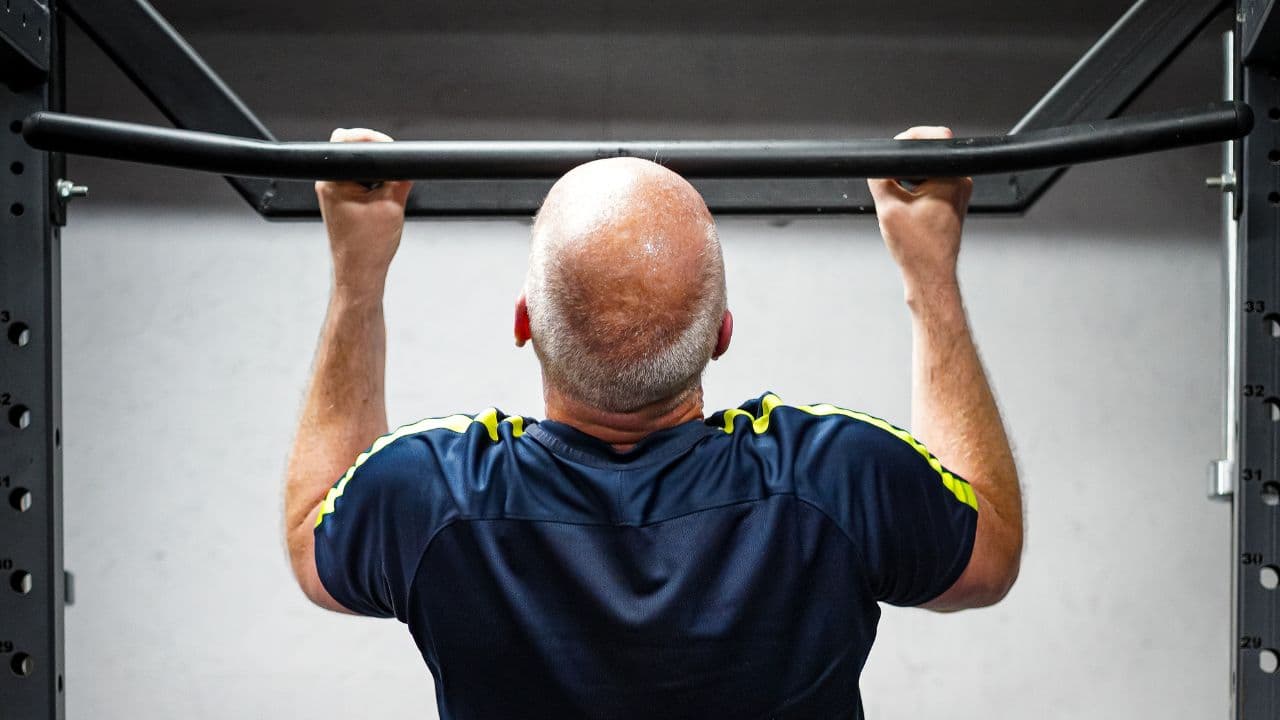
Categories
5 Tips For Getting Your First Chin-Up
Struggling to get over the bar? Foundry Director Ben Gotting gives his five top tips for beginners to achieve the elusive chin-up.
Each month at Foundry, we have a new intake of Challengers who come and spend 21 days immersed in what we’re about as a gym.
Prior to the Challenge, we meet with each person and spend 40-50 minutes evaluating them (with a movement screen and optional body composition scan to measure body fat percentage and muscle mass). This is a chance for us to get to know a bit more about them, discuss their goals and exercise history in more detail, and put together a plan of action.
In almost every evaluation that we do, when we discuss gym goals, the elusive chin-up is brought up; so I thought it would be helpful to share some tips on how to get there.
1. Time on the bar
Like learning a language, you have to consistently practice a new skill that you want to get better at. Think Gladwell’s book ‘Outliers’ where he cites the work of K. Anders Ericsson – his research shows that it takes 10,000 hours to become an expert in a certain field.
When I signed as a full-time “athlete” for London Wasps in 2000, we did a maximum effort on chin-ups as part of some physical testing. I was more than embarrassed when my maximum effort yielded zero reps. A senior player in the team, Paul Volley, gave me the best advice: to hang on (or attempt to pull up on) the bar every time I walked past the gym. Within a few weeks, I managed my first chin up. The learning: put in the effort consistently, and the results will come.
2. Do some direct arm work
Often the limiting factor for people is that they don’t do enough direct arm work. If you’re performing a chin up, your hands will be in a supinated position (when your palm or forearm faces up) – so you’ll more predominantly use the short head of biceps. Whereas if you use a pronated grip (when your palm or forearm faces down – officially a ‘pull up’), you’ll more predominantly utilise the long head of biceps.
The takeaway: to improve the torque created at the elbow flexor (which gives you the power to lift your weight in each position), you need to directly train both heads of the muscle to improve strength. This in turn leads to an increased initiation of force to get your chin over the bar.
We can train various heads of the biceps with different grips – one of my favourite exercises is the Zottman curl because it trains all heads of the biceps.
3. Use eccentrics
Eccentric movements (often called ‘negative reps’) are the lengthening of your muscles under tension – think lowering your child from your arms to the floor, or sitting down into a chair without collapsing.
Eccentrics are the best way to improve the strength of any movement, not just the chin up.
Typically, we’re stronger eccentrically (lowering phase) than we are concentrically (lifting phase). So where we can’t yet pull ourselves up to a bar, in most cases, we should be able to safely lower ourselves from the top position to a lengthened arm.
As we increase our eccentric strength, we will inevitably get neural carryover to our concentric strength too, making ourselves stronger in the process. This is a safe way to “overload” the muscle to give the stimulus necessary for development. In other words, if you want to get stronger at lifting things: concentrate your efforts on the lowering of those things and it’ll make a big difference.
4. Don’t stop pulling
I frequently see people giving up on a lift when it doesn’t immediately work out the way they may have expected. If you have ever seen an experienced lifter attempt a maximum effort lift, quite often they will have to grind that lift out for a few seconds before they make it. So if you’re pulling and still moving north, albeit slowly, don’t stop!
5. Use your strongest grip
As I mentioned earlier, you have two heads to your biceps muscles. Using both to their maximum potential simultaneously will give you the best results when attempting a chin-up. How do we do this? Use a neutral grip when attempting to get over the bar – with your hands parallel, thumbs facing towards you, and pinkies towards the bar. For me personally, it’s also the strongest grip, so it’s your best bet for success when trying to get your first full rep.
So like pre-Millenium Ben Gotting, if you want to lose your pull-up virginity or break your chin-up duck: keep practising, add some curls into your sessions…and don’t stop pulling!!
Want to find the strongest version of yourself? Try our 21-Day Challenge.
Related Articles
- How to Increase Chin Up Strength
- Why You Should Aim to Get your First Strict Chin Up
- How to do Your First Full Body Chin Up
- 7 Tips To Improve Your Chin Ups
- 9 Tips to Improving Your Chin Ups


